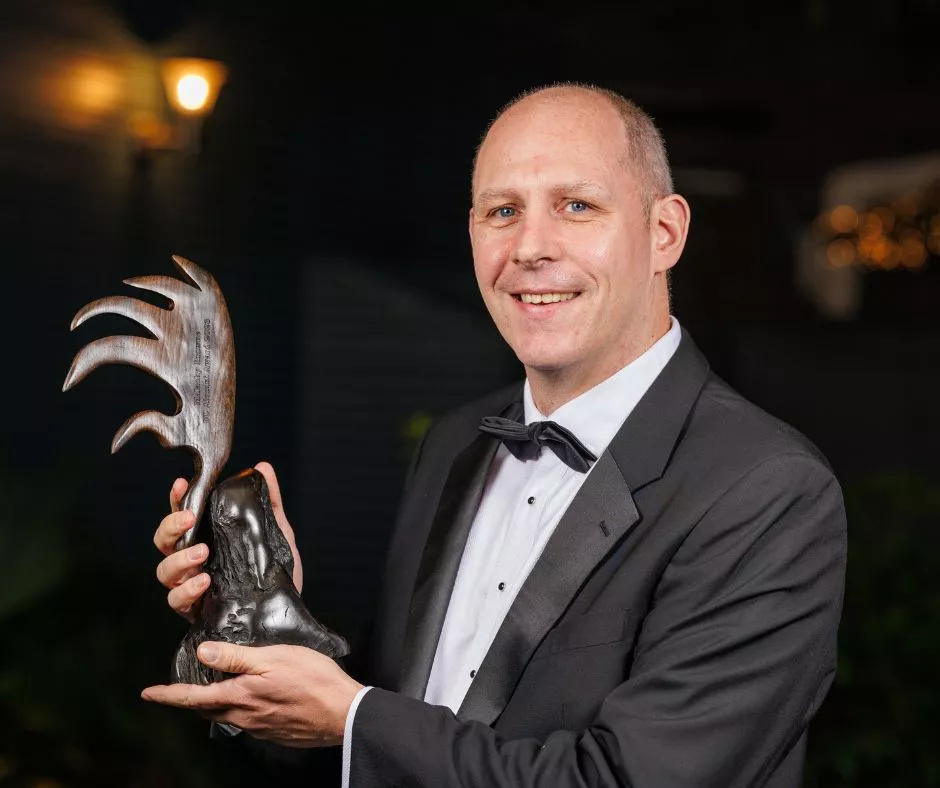

Double Pulitzer Prize-winning New York Times investigative journalist Malachy Browne, together with his colleagues from the Visual Investigations Unit that he co-founded, has pioneered a form of journalism that combines traditional reporting with the forensic analysis of digital evidence.
In 2006, Malachy graduated from University of Limerick with a Masters in International Studies, but his early career told somewhat of a different story.
Malachy grew up in Broadford, County Limerick, where he lived with his parents Mary and David and sister Susan. He went to St Munchin’s College and studied engineering at University College Dublin and went on to work as a computer programmer for four years before enrolling in the UL Masters program.
After graduating from UL, he took on a journalism apprenticeship of sorts at Village Magazine in Dublin under the editorship of Vincent Browne, an uncle of his. He later worked as news editor at Storyful, a social media agency founded by Mark Little. At Storyful, he learned to find and verify newsworthy content on social media which became foundational skills for his future work at The New York Times. He describes a tight team, many of whom remain close friends. He later worked at Reported.ly, a US outlet.
Malachy tells of how, in 2014, he visited Carnegie Mellon University in Pittsburgh to hear war crimes investigators show how they use visual evidence in their cases. This inspired him to incorporate the practices into journalism.
In 2016 he joined the New York Times and moved to New Jersey with his wife Siobhan and their children. A year later he co-founded the Visual Investigations team with executives Nancy Gauss and Mark Scheffler.
With a team of 17 reporters, producers and video editors, their work involves shoe-leather reporting and online sleuthing, analysing videos and audio, using satellite imagery and creating 3-D reconstructions of crime scenes. The team uses this evidence to connect dots, find facts and hold power to account and has received almost every major award in American journalism.
As Enterprise Director, Malachy identifies and runs investigations that inform public debate and have the potential to change policy. For most of 2022, Malachy ran a team investigating atrocities in the Ukrainian town of Bucha. Their work culminated in a Pulitzer-winning film that named the Russian unit and commander responsible for killing dozens of civilians in the town. The evidence they uncovered was reported upon by hundreds of newsrooms globally.
In 2021, he co-directed “Day of Rage,” a 40-minute documentary that synchronised and mapped out thousands of videos and police communications to capture in vivid detail what happened during the US Capitol riot. The critically acclaimed film was viewed more than 10 million times, won a Peabody Award and was one of 15 films shortlisted for Oscar consideration.
In 2020, Breonna Taylor became synonymous with calls for racial justice in America after Kentucky police killed her in her home. Malachy travelled to Louisville, secured exclusive crime scene evidence and, with his colleagues, reconstructed in indelible detail how the botched raid unfolded. The officer who killed Ms Taylor was fired days after the investigation was published. The documentary they produced was awarded two News and Documentary Emmys.
In 2019, Malachy was part of a Pulitzer-winning team who used cockpit recordings to show how Russian fighter pilots intentionally bombed dozens of medical facilities in Syria, crippling healthcare.
He reported and produced Emmy-winning investigations into the Las Vegas mass shooting and a chemical attack in Douma, Syria. Other investigations spotlighted military shootings in Nigeria, revealed the links between the Saudi officials who killed Jamal Khashoggi and their Crown Prince, and showed how Israeli soldiers shot and killed a young Palestinian medic along the Gaza-Israel border.
This work has been cited in murder trials, at congressional hearings and U.N. Security Council meetings. It has triggered policing reforms and launched government inquiries. Visual forensics is now a growing field and specialist teams have been established in the Washington Post, CNN, the BBC and the Wall Street Journal.
Beyond his role at The New York Times, Malachy presents to journalism classes and is on the Advisory Board for an Investigative Reporting Program at the University of Southern California. In October, he gave the annual Hearst Lecture at Columbia University which examines the changing media industry. He also serves as a director of Right to Know, an Irish not-for-profit organisation focused on promoting transparency through access to information.
 Student Centre (SU-101)
Student Centre (SU-101)
University of Limerick
Limerick, Ireland
Phone: 353 61 202475
Email: ulaa@ul.ie